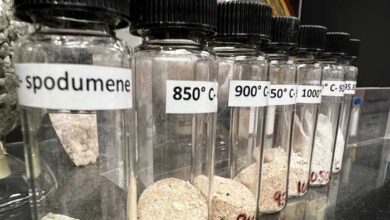BAKU: The world’s warming tropical wetlands are releasing more methane than ever before, research shows — an alarming sign that the world’s climate goals are slipping further out of reach.
A massive surge in wetlands methane — unaccounted for by national emissions plans and undercounted in scientific models — could raise the pressure on governments to make deeper cuts from their fossil fuel and agriculture industries, according to researchers.
Wetlands hold huge stores of carbon in the form of dead plant matter that is slowly broken down by soil microbes. Rising temperatures are like hitting the accelerator on that process, speeding up the biological interactions that produce methane. Heavy rains, meanwhile, trigger flooding that causes wetlands to expand.
Scientists had long projected wetland methane emissions would rise as the climate warmed, but from 2020 to 2022, air samples showed the highest methane concentrations in the atmosphere since reliable measurements began in the 1980s.
Four studies published in recent months say that tropical wetlands are the likeliest culprit for the spike, with tropical regions contributing more than 7 million tonnes to the methane surge over the last few years.
“Methane concentrations are not just rising, but rising faster in the last five years than any time in the instrument record,” said Stanford University environmental scientist Rob Jackson, who chairs the group that publishes the five-year Global Methane Budget, last released in September.
Capturing emissions from wetlands is challenging with current technologies.
“We should probably be a bit more worried than we are,” said climate scientist Drew Shindell at Duke University,
The La Nina climate pattern that delivers heavier rains to parts of the tropics appeared somewhat to blame for the surge, according to one study published in September in the journal Proceedings of the National Academy of Sciences.
But La Nina alone, which last ended in 2023, cannot explain record-high emissions, Shindell said.
For countries trying to tackle climate change, “this has major implications when planning for methane and carbon dioxide emissions cuts,” said Zhen Qu, an atmospheric chemist at North Carolina State University who led the study on La Nina impacts.
If wetland methane emissions continue to rise, scientists say governments will need to take stronger action to hold warming at 1.5 C (2.7 F), as agreed in the United Nations Paris climate accord.
WATER WORLD
Methane is 80 times more powerful than carbon dioxide (CO2) at trapping heat over a timespan of 20 years, and accounts for about one-third of the 1.3 degrees Celsius (2.3 F) in warming that the world has registered since 1850. Unlike CO2, however, methane washes out of the atmosphere after about a decade, so it has less of a long-term impact.
More than 150 countries have pledged to deliver 30% cuts from 2020 levels by 2030, tackling leaky oil and gas infrastructure.







